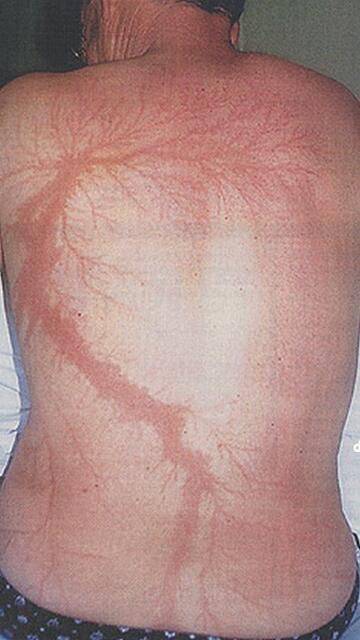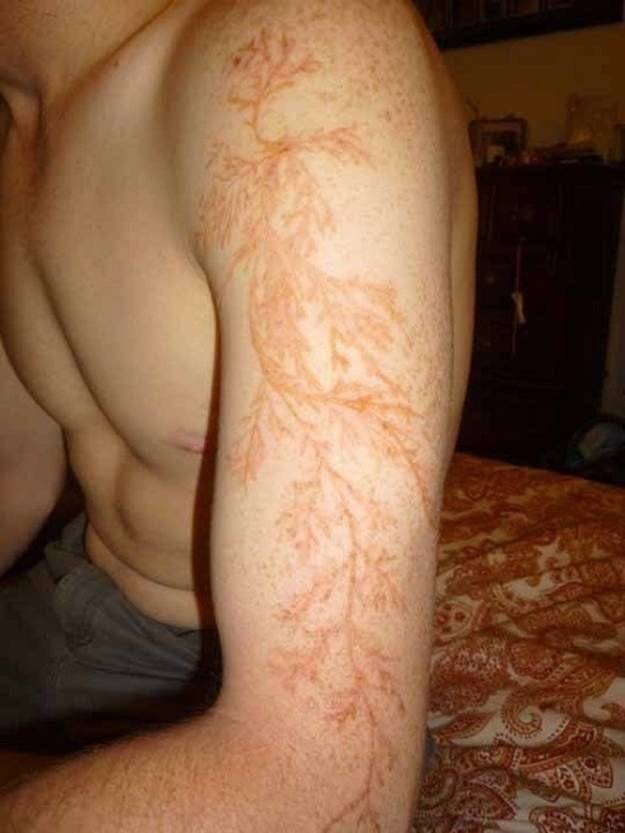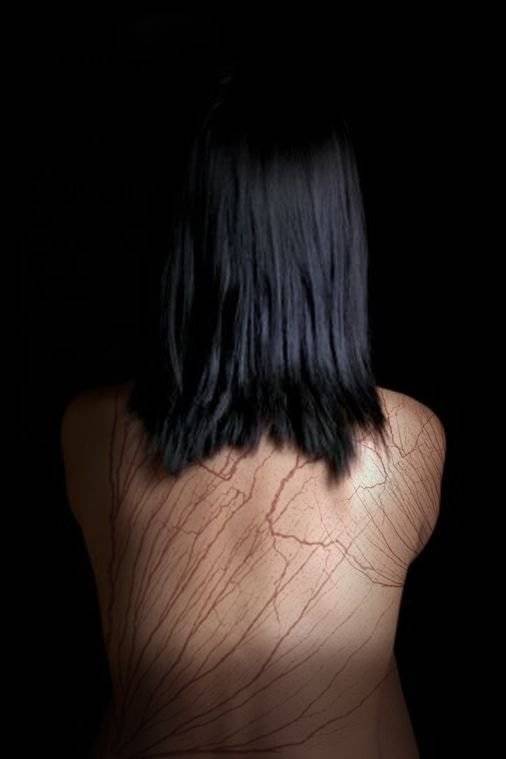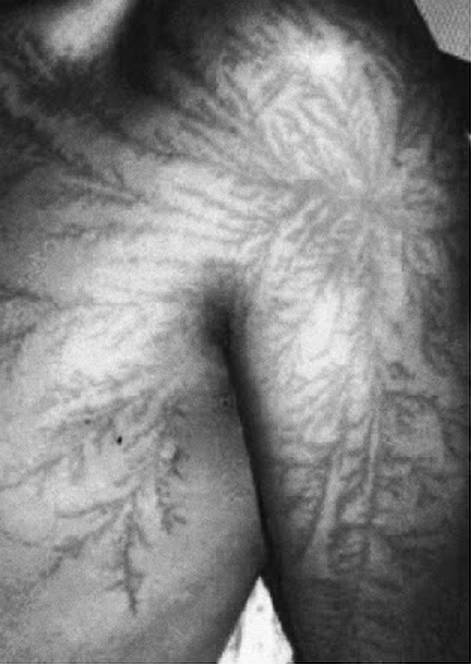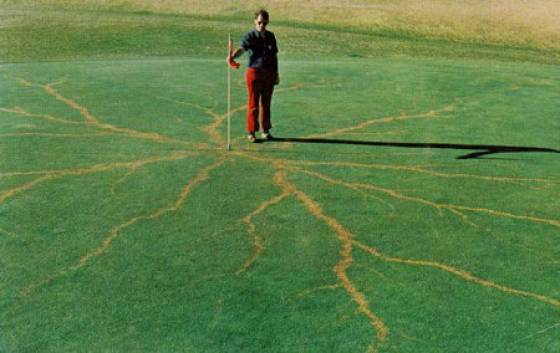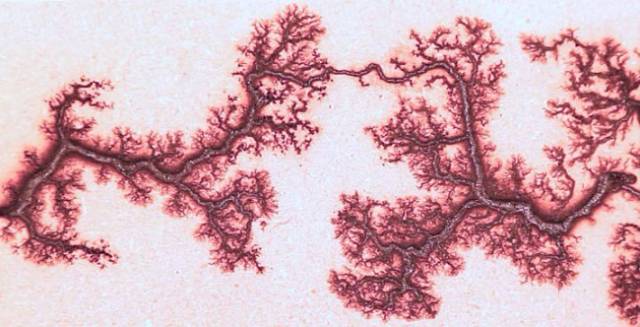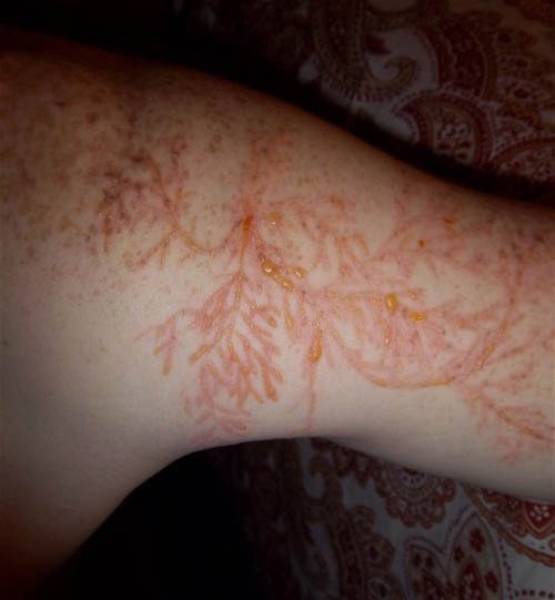Lichtenberg figures are branching electric discharges that sometimes appear on the surface or the interior of insulating materials. They are named after the German physicist Georg Christoph Lichtenberg, who originally discovered and studied them. When they were first discovered, it was thought that their characteristic shapes might help to reveal the nature of positive and negative electric “fluids”.
These are reddish, fernlike patterns that may persist for hours or days. They are also a useful indicator for medical examiners when determining the cause of death
Lichtenberg figures appearing on people are sometimes called lightning flowers, and they are thought to be caused by the rupture of capillaries under the skin due to the passage of the lightning current or the shock wave from the lightning discharge as it flashes over the skin.
A lightning strike can also create a large Lichtenberg figure in grass surrounding the point struck. These are sometimes found on golf courses or in grassy meadows. Branching root-shaped "fulgurite" mineral deposits may also be created as sand and soil is fused into glassy tubes by the intense heat of the current.


